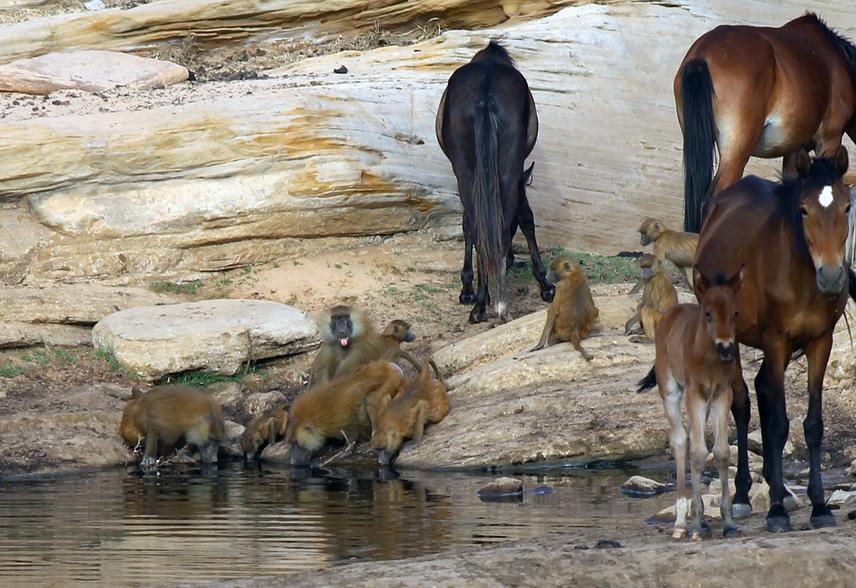Social media video featuring the project.
Updates on the distribution of the Guinea baboons’ desert populations in Mauritania.
8 Feb 2022 Tagant Plateau, Mauritania, Africa Mammals | Communities | Habitats | Primates | Education
The Guinea Baboon (Papio papio) is a North-West African endemism listed as Near Threated by the International Union for Conservation of Nature. Its distribution encompasses southern Mauritania, Gambia, Senegal, south-west Mali, Guinea-Bissau, Republic of Guinea, and north-west Sierra Leone. Given the general arid conditions that characterise Mauritania, Mauritanian populations of Guinea Baboons are typically found close to water bodies, especially near rock-pools along mountain rivers. There is still a huge gap of baseline knowledge on the real distribution limits, biology, ecology, and population structure of this species in its northern distribution fringe. There are strong insights that the Tagant and Afollé massif could host undiscovered populations that might be in contact with those inhabiting South-West Mali. These unknown populations may hide local adaptations related to dispersal ability, water dependency, and ecological plasticity, but also be strongly endangered by the advancing enthronisation and aridification affecting the area.

A social group of Guinea baboons and domestic horses drinking from the same guelta in the North Afollé mountains. Earlier in the day, before the picture was taken, the cattle owner also drank from the same water pool. © Cristian Pizzigalli.
In Mauritania, the knowledges of local communities about the Guinea baboon and the importance of biodiversity conservation in general, are limited; this is particularly true in the rural areas outside the capital city (Nouakchott). Nevertheless, although Guinea baboons and humans often share the same space and resources (e.g., water), to date the coexistence seems to be pacific and records of direct human persecution (i.e., hunting) on Guinea baboons in Mauritania are none. This is in direct contrast to what happens in other areas of the species’ range (e.g., Senegal and Guinea-Bissau) where negative interactions between farmers and baboons have been proposed as an important conservation threat. However, the few wetlands available in the desert mountains and the freshwater sources are thought to be overexploited to maintain crop fields and livestock production, having as consequences water-shortages and contamination of water by faecal material. Moreover, unregulated use of freshwater sources might increase the risk of non-human primates of contracting viruses and further events of “anthropozoonosis” (the transmission of diseases from humans to other species).
This project aims to survey the known northernmost Guinea baboons’ populations and other suitable localities for Guinea baboon persistence in Mauritania, and to estimate the impact that climate change and human footprint have on these populations. Results will be disseminated among relevant stakeholders to engage them in conservation efforts and to increase local awareness about the conservation importance of Guinea baboons and their habitat.
Social media video featuring the project.
Updates on the distribution of the Guinea baboons’ desert populations in Mauritania.